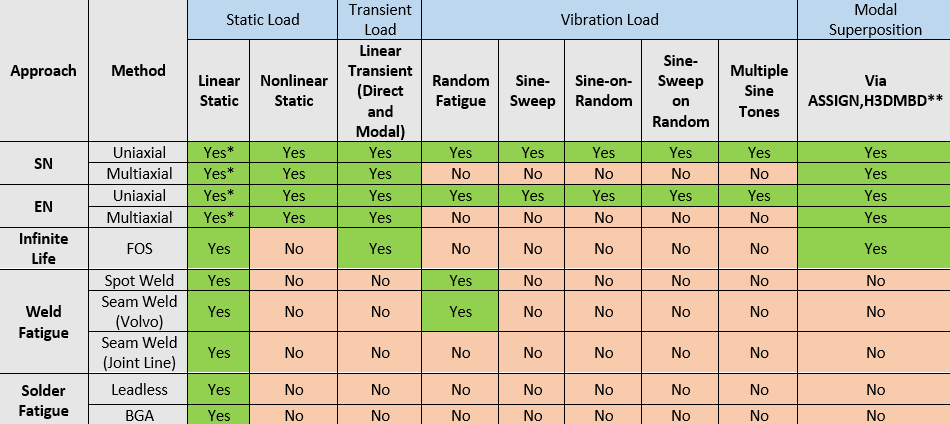Fatigue Analysis
Fatigue Analysis is intended for solutions to structures in a large number of loading cycles.
Transient analysis is not effective in such cases since the elapsed time is generally very high and fatigue effects manifest over many loading cycles.
In OptiStruct, both Uniaxial and Multiaxial Fatigue Analysis can be conducted.
Fatigue Support

**Modal Superposition is fatigue analysis performed based on stresses recovered from a flex H3D file sourced from a multibody analysis. The ASSIGN,H3DMBD entry can be used to identify the flex H3D file, and modal participation factors are assigned to obtain the corresponding stresses for the fatigue calculation. For more information, refer to Recover MBD Analysis Results and Fatigue Analysis Setup.
*An additional option to fatigue damage calculation, is the Pseudo damage method. This is supported only for Static SN and Static EN approaches (both uniaxial and multiaxial methods). For more information, refer to Pseudo Damage Method.
| Vibration Fatigue Solution | Solution | Example Applications |
|---|---|---|
| Random | Fatigue analysis based on Random Response Analysis |
|
| Sine-Sweep | Fatigue analysis based on a sine-sweep test based on Frequency Response Analysis. |
|
| Sine-on-Random | Superposition of multiple sine-tones with background random noise |
|
| Sine-sweep on Random | For each damage calculation event, superposition of a single sine-tone (representing the sweep) on the background random noise. Damage is then added up across the entire sweep to calculate final damage. |
|
| Multiple sine-tones | Superposition of multiple sine-tones (without random vibration) |
|